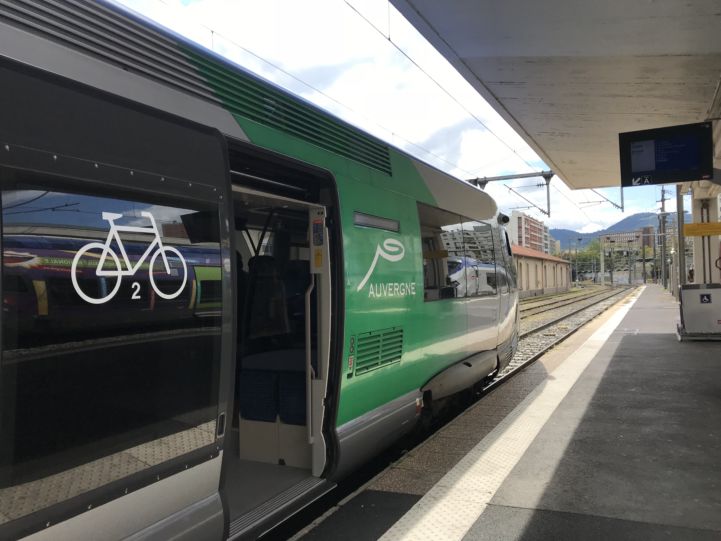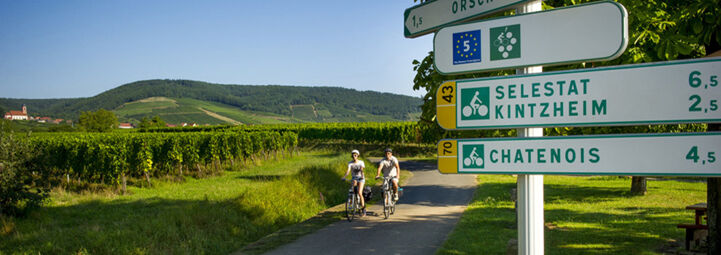The tourism industry goes green with climate action plans but must do more to realise the transformative potential of cycling
1. Prioritise multimodality
Lowering transport emissions is the biggest hurdle for sustainable tourism. According to a landmark UNWTO report from 2019, transport accounts for 75% of total tourism emissions. Cycling is key to improving multimodal connectivity and lowering transport emissions, but this impact can only be fully realised if the individual freedom and flexibility of cycling is combined with the speed and efficiency of trains, buses, and other modes of green transport. The link between cycling tourism and multimodality is recognized by the European Union institutions, who combine these topics in a specific chapter of the European Declaration on Cycling adopted in April 2024.
The Blueprint for Tourism Climate Action Plans proposes several actions that improve conditions for cycling. However, the measures are primarily concerned with actions within individual organisations to support low-emission staff mobility, or actions in destinations to improve cycling infrastructure and access to bikes at the destination. These are important actions, but they do not reflect a broader ambition to integrate the bicycle in a comprehensive rethinking of transportation through multimodal mobility.

2. Measure the impact of cycling tourism
Quantifying the benefits of cycling and impact of bike travel in reducing local and tourist emissions should be a key measurable in destination climate action plans, yet in the blueprint, bicycle transportation does not feature in the recommended actions to measure destination emissions.
The bicycle is a practical, cheap, and reliable mode of transport that requires little space and investment to utilise. At the same time, the economic and social impact of the bicycle is remarkably high. Cycling as a leisure activity has been found to make a strong positive contribution to national economies, and there is high potential for growth. Facilitating for cycling to work, for cycling paths and itineraries in the local community as well as long-distance cycle routes is an effective way to manage and improve the attractiveness of a destination, all the while contributing to lowering carbon emissions related to transportation. To visualise the benefits of investments in cycling infrastructure, climate action plans must have clear strategies to measure numbers of cyclists and their economic impact.
3. Make cycling friendly services national priority
To support the growth of cycling tourism, investments in cycling infrastructure must be packaged with a range of services and such as parking facilities, multimodality options, adapted services in hotels and restaurants, bike rental offers, etc. Most of these services rely on Small and Medium Enterprises that lack financial flexibility to invest on a whim. Therefore, cycling-friendly services depend on public subsidies and a clear integration of cycling tourism in national tourism strategies. Existing cycling-friendly services should be made visible through dedicated schemes.
4. Integrate EuroVelo and cycling tourism in all relevant strategies
As the backbone of European cycle route networks, EuroVelo routes should be included in all relevant national, regional, and local strategies, both for sustainable mobility and tourism. Furthermore, cycling tourism should become a priority segment of the European Commission’s Transition Pathway for Tourism.

Investments in cycling tourism reduce car congestion, improve public health, create jobs, develop local economies and enhance natural, cultural, and human territorial capital. A recent study concludes that this diversification of benefits means that cycle tourism is less vulnerable to economic crises than conventional mass tourism. To benefit from the transformative potential of cycling tourism, both public and private stakeholders in the tourism industry should place the bicycle at the centre of their transition strategies.
ECF welcomes local action to mitigate the environmental impact of tourism through implementation of tourism climate plans and further encourages stakeholders to fully integrate cycling’s potential in those plans to reach the targets.
Written by: Amund Vandvik Skogrand
Cover photo: Mikko-Pekka Karlin